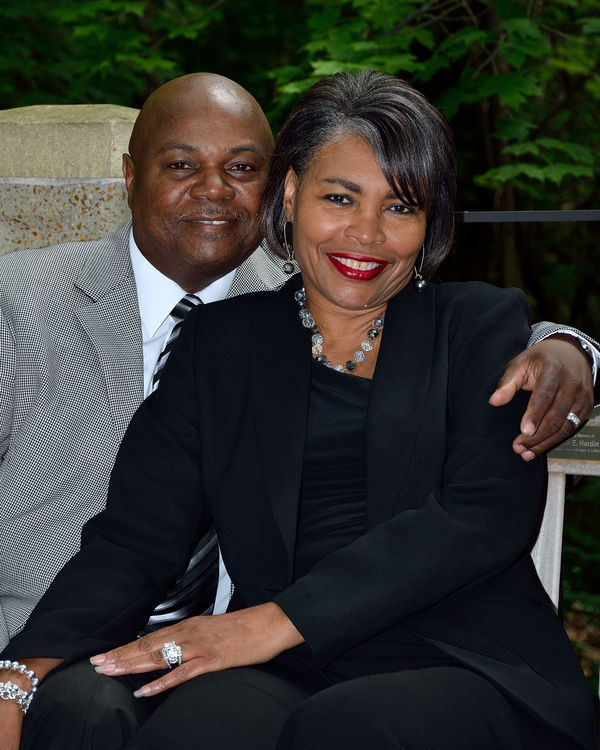How do I photograph people with dark skin color?
Jul 1, 2014 21:12:12 #
edstubbs
Loc: East Coast; 1st state, Delaware
Really, really good information on this subject. 😆
Jul 1, 2014 21:49:15 #
The reason being the faster SS would darken the background, and the fill flash lighting would lighten up the main subject.
This Web-site discusses how to shot black people:
http://ethiopia.limbo13.com/index.php/photographing_people_with_dark_skin_i/
See this Web-site for more on flash lighting:
http://neilvn.com/tangents/flash-photography-techniques/
Just a matter of technique.
Good luck.
==========
This Web-site discusses how to shot black people:
http://ethiopia.limbo13.com/index.php/photographing_people_with_dark_skin_i/
See this Web-site for more on flash lighting:
http://neilvn.com/tangents/flash-photography-techniques/
Just a matter of technique.
Good luck.
==========
speters wrote:
You really needed to shoot this at a much faster shutter speed and then using some fill to get the right exposure on the people.
Jul 1, 2014 22:07:12 #
nekon wrote:
You need minus compensation for dark tones-not plu... (show quote)
It's the old black cat in the coal bin problem. Metering off an 18% neutral grey card can help.
Jul 1, 2014 22:33:08 #
Jul 1, 2014 23:39:25 #
It seems that this shot needed some fill flash light and it would have been much better.
BillA77V wrote:
Here is one... I realize that the bright backdrop doesn't help, but I am even having trouble pulling out the detail in post.
Jul 2, 2014 00:00:25 #
Here is something file away: when it comes to real portraits, not this situation where you are forced into 100 people in a short time, think about this: for light/caucasian skin, light illuminates, the shadows define. For dark skin it is the opposite - it is the highlights that define the face.
This really applies more to studio work where we can control the lighting, but to the extent it is controllable with natural light, we should.
This really applies more to studio work where we can control the lighting, but to the extent it is controllable with natural light, we should.
Jul 2, 2014 00:44:06 #
Excellent answer Necon. Also, in a group shot, be sure to ahve the darkest complected faces closes to the light. Window, flash, overhead lighting and use diffused fill flash by putting a white handkerchief (tissues work) 1 or 2 folds over the pop up or on camera flash. By aligning the group according to incident light, you will also fairly expose the lighter skinned subjects better. It is a real balancing act. But it IS photography vs snapshots. That's why we got those dials and buttons.
As Necon says, you meter is trying to expose a Zone II tone face as if it were a Zone VI, Turning it into looking like a tuxedo jacket. That face needs to be exposed 1+, maybe 2 stops wider than you meter, by using exposure compensation. Use your screen to check and re-expose. And your friends will appreciate your concern and consideration. After a number of years, being the featureless spots in group photos sets very old.
SO, I'm told.
As Necon says, you meter is trying to expose a Zone II tone face as if it were a Zone VI, Turning it into looking like a tuxedo jacket. That face needs to be exposed 1+, maybe 2 stops wider than you meter, by using exposure compensation. Use your screen to check and re-expose. And your friends will appreciate your concern and consideration. After a number of years, being the featureless spots in group photos sets very old.
SO, I'm told.
Jul 2, 2014 00:56:04 #
BillA77V wrote:
Recently I photographed 100 Forner classmates at a... (show quote)
Hello Bill. I am assuming from your screen name that you photographed the pictures in question using a Sony A77. If this is the case, let me assure you that your camera is VERY capable of taking quality images of dark complexioned people in either mixed company or in poor lighting.
I recently photographed a wedding where the bride and groom were of different races; he was white and she black. I also used a pair of flashguns; the Sony HVL-F58AM as my primary, and a Sony HVL-F36AM as the off-camera flash. I did not use diffusers.
And while MOST of the mixed company shots turned out perfectly out-of-camera, some of them DID require post processing to "clean them up".
Bill, what you propose CAN be done and done well. It takes practice and the right equipment.
Jul 2, 2014 02:58:37 #
BillA77V wrote:
Recently I photographed 100 Forner classmates at a... (show quote)
The light that falls on people be they white or black is no different...a good exposure is just that, a good exposure.
But lighting lighter skinned people vs darker skinned people is a bit different in technique.
Here is a video that might help.
http://www.youtube.com/watch?v=3-fCb3MBs8s
And PS; the Captn summarized it perfectly above... for light/caucasian skin, light illuminates, the shadows define. For dark skin it is the opposite - it is the highlights that define the face.
Jul 2, 2014 06:40:04 #
Here's a shot from work a few weeks ago. You will definitely need a good flash.
Jul 2, 2014 10:04:58 #
romanticf16
Loc: Commerce Twp, MI
PVR8 wrote:
It seems that this shot needed some fill flash light and it would have been much better.
To do 150 couples in 30 minutes he need a pro flash unit(off camera) with a battery pack.
If you want to reply, then register here. Registration is free and your account is created instantly, so you can post right away.







